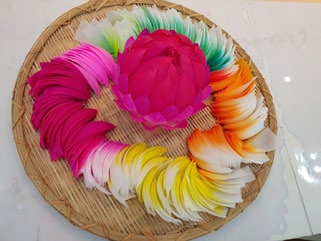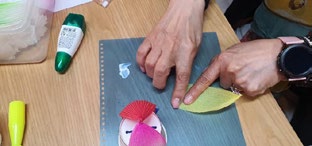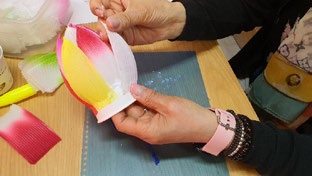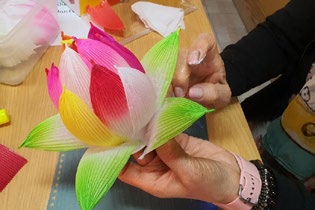Yeondeung-Hoe: Korea’s Festival of Light and Spiritual Harmony
- Chunghee Jung
- 1 day ago
- 8 min read
By Chunghee Jung
Photography Courtesy of Yeoundeun-Hoe Office

Symbolism and Significance of the Lotus Lantern in Buddhism
A lotus lantern is a lantern in the shape of a lotus flower, which symbolizes purity and enlightenment in Buddhism. Just as a lotus blooms untainted from muddy water, the lotus lantern illuminates the darkness and represents the Buddha’s wisdom and compassion, guiding sentient beings on the path to enlightenment. Lighting a lotus lantern celebrates the Buddha’s Birthday, symbolizes illuminating one's own mind, and conveys the wish for all sentient beings to be happy. Additionally, offering a lotus lantern is considered a form of practice that expresses reverence and devotion to the Buddhas and Bodhisattvas.
The Meaning of Yeondeung-Hoe (Lotus Lantern Festival)
Yeondeung-Hoe is more than just a Buddhist ceremony; it has evolved into a cultural festival where Buddhists and the public come together. This festival honors the Buddha’s teachings. Lighting a lotus lantern symbolizes not only illuminating one’s own mind, but also becoming a light that brightens the world. Offering a lotus lantern is considered an act of devotion, expressing respect to the Buddha and a prayer for all sentient beings to walk the path of enlightenment. Beyond its Buddhist significance, Yeondeung-Hoe plays a vital role in fostering community harmony and preserving traditional culture. Every year, countless participants march with lanterns, conveying a message of unity, hope, and the aspiration for a brighter, more harmonious world.

The History of Yeondeung-Hoe
It is known that the tradition of offering lanterns existed even during the time of the Buddha. One famous account tells of when the Buddha was staying at Vulture Peak in Rajgir, India. While all other lanterns that had been lit throughout the night eventually extinguished, only the lantern offered by Nanda, a poor woman with deep devotion and a sincere vow, continued to burn brightly until the end. Witnessing this, the Buddha bestowed a prophecy upon her in the Hyunwookyeong (Sutra of the Poor Woman Nanda), stating, "Because of the merit from offering this lantern, she will attain Buddhahood."
Offering a lantern to the Buddha is a symbolic act of devotion. The light of the lantern represents the wisdom of the Buddha, which dispels the darkness of ignorance and suffering, guiding sentient beings toward enlightenment. The light represents the Buddha’s teachings, which guide individuals toward a deeper understanding of truth, compassion, and spiritual awakening. The light is also seen as a metaphor for the mind’s awakening—shedding the darkness of delusion and ignorance and bringing clarity, insight, and inner peace. During festivals like Yeondeung-Hoe, lighting a lantern represents the practitioner's aspiration to walk the path of enlightenment and to bring light into the world for the benefit of all sentient beings.
Silla Period: ‘Gandeung (看燈)’
The history of Yeondeung-Hoe (Lotus Lantern Festival) dates back to the Silla period. According to the Samguk Sagi (History of the Three Kingdoms), in the 6th year of King Gyeongmun’s reign (866) and the 4th year of Queen Jinseong’s reign (890), the kings visited Hwangnyongsa Temple to observe the lotus lanterns (Yeondeung 燃燈) being lit. The term Gandeung (看燈), meaning "watching lanterns," indicates that over a thousand years ago, temples were already holding lantern-lighting ceremonies, which later evolved into the Yeondeung-Hoe.

Goryeo Period: Yeondeung-Hoe as a National Event
During the Goryeo period, Buddhism was the state religion and Yeondeung-Hoe became an official national festival. Goryeo’s founder, King Taejo, emphasized the significance of Yeondeung-Hoe and the Palgwanhoe (Eight Precepts Assembly) in his Ten Injunctions (Hunyo Sipjo). The government even established the Yeondeung Dogam (Lantern Festival Bureau) and appointed Yeondeung Wijang (Lantern Festival Officers) to organize the event systematically.
On the 15th day of the first and second lunar months, the King and the people would light splendid lanterns throughout the country, from the royal palace to rural villages, while holding feasts and enjoying performances. Historical records state that during the King’s return from the lantern festival procession, as many as 30,000 lanterns were illuminated along the streets for two nights, making the night as bright as day.
According to the Goryeosa (History of Goryeo), Baek Seon-yeon lit lanterns on the Buddha’s birthday in the 20th year of King Uijong’s reign (1166). Additionally, in the 32nd year of King Gojong’s reign (1245), Choi Yi organized a grand Yeondeung-Hoe, where musical performances and celebrations continued throughout the night. The traditions of Yeondeung-Hoe from the Goryeo period continued into the Joseon dynasty and modern times, not only as part of Buddhist culture but also as a cherished Korean heritage festival.
Joseon Dynasty (1392–1910)
Ho-gi (Flag Calling) Game, Gwan-deung (Lantern Viewing) Game
After the founding of the Joseon Dynasty, the state-sponsored Yeondeung-Hoe (Lantern Festival) was discontinued, but it remained as a folk event and was passed down as a seasonal custom. Children would cut paper to make flags and hang them on lanterns, then carry them around the capital city, collecting rice or money to cover the cost of making the lanterns. This "Ho-gi" game, which dates back to the Goryeo Dynasty, was widely practiced.
Families would erect tall poles and light lanterns corresponding to the number of children in the household, while colorful lanterns were hung throughout the streets. At night, people of all ages would carry lanterns and stroll around, creating a sea of lights in the streets, which became a spectacular sight known as the "Gwan-deung" game. Climbing up to Jamdu Peak on Namsan to overlook the lanterns was considered one of the most significant spectacles of the year, and the lantern display at Unjongga in Seoul was famous as one of the "Ten Scenic Views of Gyeongdo."

Today’s Yeondeung-Hoe Festival
Yeondeung-Hoe is a Buddhist festival with a long history and tradition, celebrated to commemorate the birth of the Buddha and to practice the values of compassion and equality. Even in modern society, this festival plays a crucial role in illuminating both individuals’ hearts and the spirit of the community while promoting the beauty of Buddhist culture. The festival aims to go beyond being just a celebration; it seeks to spread the Buddha’s teachings while praying for the happiness and enlightenment of all beings. Lighting lotus lanterns symbolizes purifying one’s mind, fostering harmony, and creating a more peaceful society.
Today, Yeondeung-Hoe is held on a grand scale in Seoul and other major temples and cities across Korea. The festival includes a lantern parade, traditional cultural experiences, lantern exhibitions, performances, and more, allowing participants to deeply engage with Buddhist traditions. With its inclusion on UNESCO’s Intangible Cultural Heritage for Humanity National Intangible Cultural Properties, the festival has gained global recognition attracting foreign visitors.
Yeondeung-Hoe offers various programs for international visitors, along with multilingual services in English, Chinese, and Japanese. Foreign guests can experience activities such as lantern-making, temple visits, and traditional performances, helping to introduce Korean Buddhist culture to the world.

How to Make a Lotus Lantern
Materials:
Wrinkled Korean traditional paper (Hanji)
Glue
Paper cups
Separate stacked wrinkled paper
Choose a color for the flower (15–18 petals) and a color for the leaves (about 5).
Gently hold a flower petal between your index and middle fingers.
Apply a tiny amount of glue at the center of the petal.
Press both sides of the petal’s wrinkles toward the center to shape it.
Pinch the tip of the held petal using the thumb and index fingernail of your other hand.
Twist it tightly and apply a tiny amount of glue to the tip of the petal.
Repeat this process for 15–18 flower petals and 5 leaves.
Apply a small amount of glue about ½ inch from the bottom edge on the inside of the curved part, forming a “U” shape.
For the first layer, attach a twisted petal 2 inches below the top of the cup.
Attach another petal on the opposite side of the cup, aligning the tips of both petals.
For the second layer, attach a petal ½ inch lower than the first layer, positioning it between the two petals of the first layer.
Repeat the process for the third layer.
For the fourth layer, apply a small amount of glue to the outer curve of a leaf and attach it to the bottom edge of the cup.
Integrating Lotus Lanterns into Mediation Practices
For mediation practitioners, creating a lotus lantern can serve as a form of waking mediation through action, blending creativity with the principles of mindfulness. It reminds us of the lotus’ journey - emerging pure and beautiful despite its roots in the muddy water, symbolizing resilience and growth. After completing a paper lotus lantern, meditative phrases of appreciation can honor the effort, the symbolism of the lotus, and the mindful state achieved during the activity.
Ritual of Lighting the Lanterns
If the lanterns can hold a light (like an LED candle), have participants light them while silently reciting a phrase of their choice.
Dim the room lights, creating a serene and sacred atmosphere.
Meditative Phrases
Phrases of Gratitude
“I am grateful for the hands that created this light.” Acknowledges the physical effort and creativity you bring to the activity.
“Thank you for this moment of peace and creativity.” Expresses gratitude for the time and space you dedicated to this mindful practice.
“I honor the patience and care that shaped this lantern.” reflects on the virtues you cultivated during the process.
Phrases Inspired by the Symbolism of the Lotus
“Like the lotus, may I rise above challenges to find clarity and beauty.” Draw inspiration from the resilience and purity of the lotus flower.
“This light reminds me of the wisdom that emerges from stillness.” Connect the lantern’s light with enlightenment and inner growth.
“May the lantern’s glow guide me toward compassion and understanding.” Use the light as a metaphor for illuminating the path to kindness.
Phrases Celebrating Connection
“This lander connects me to all beings seeking light in their lives.” Recognize the shared human experience of striving for peace and happiness.
“May this lantern shine as a symbol of unity and love.” Dedicate the act of creation to fostering harmony with others.
“With this light, I send blessing to all who are suffering.” Offer you work as an act of compassion and support for others.
Closing Phrases for Reflection
“This lantern is a reminder of the beauty in mindful creation.” Celebrate the meditative journey of crafting.
“May I carry the peace of this moment into my daily life.” Set an intention to extend the tranquility gained into future experiences.
"Like this lantern, I can be a source of light for myself and others." Affirm your capacity to bring positivity and guidance to those around you.
Begin with a Centering Exercise
Guide Participants or Yourself Through a Brief Mindfulness Exercise
Breath Awareness: Invite everyone to close their eyes and take a few deep breaths, focusing on the in-and-out rhythm.
Hand Awareness: Ask participants to place their hands on their laps, feeling gratitude for the hands that created the lantern.
Introduce the Symbolism of the Lotus Lantern
Reflect on the Lotus's Symbolic Meaning
Its journey from muddy waters to blossom in purity and light.
Explain that the lantern represents their creativity, patience, and the illumination they bring to their lives and others.
Use the Phrases in a Guided Reflection
Begin a Slow, Meditative Reflection
pausing between phrases to allow for contemplation:
Gratitude for Effort
"I am grateful for the hands that created this light."
"Thank you for this moment of peace and creativity."
Symbolic Reflection
"Like the lotus, may I rise above challenges to find clarity and beauty."
"May this lantern's glow guide me toward compassion and understanding."
Dedication to Others
"With this light, I send blessings to all who are suffering."
"May this lantern shine as a symbol of unity and love."
Invite Personal Sharing
Ask participants to share how they felt during the creation process.
Encourage them to express what the lantern and phrases mean to them personally.
Closing Intention Setting
Closing Affirmations
"May we carry the peace of this creative moment into our daily lives."
"Like this lantern, may we each be a source of light and kindness in the world."









Comments